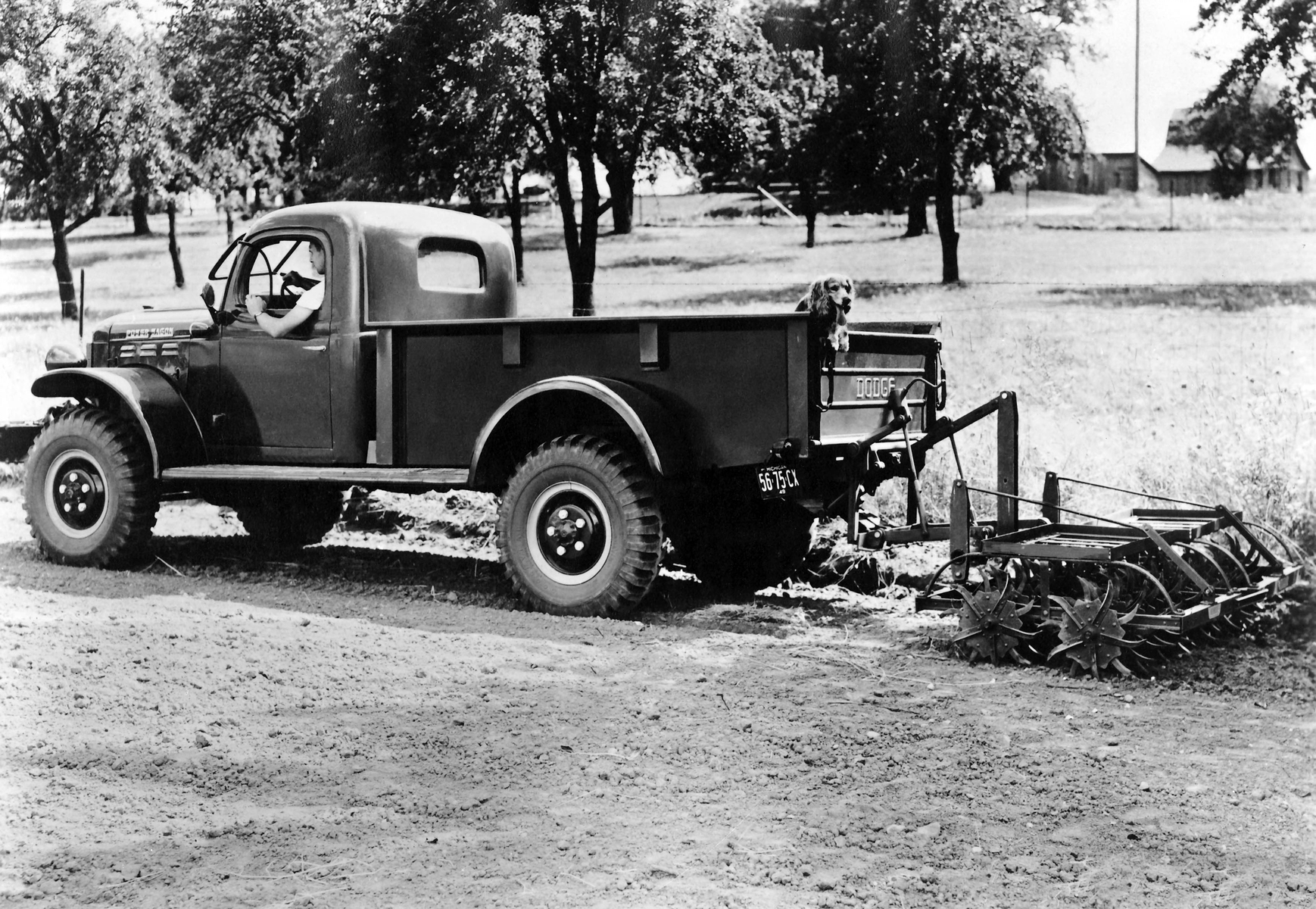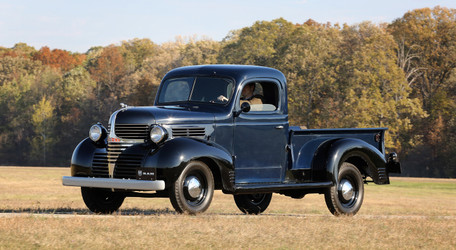Classic Truck History Part 3: Dodge Pre-1960
Posted by Jil McIntosh on Jul 21st 2020
Dodge Trucks Pre-1960
John and Horace Dodge were brothers who were also skilled machinists. They started making bicycles around 1900, and then parts for some of the pioneering automakers, including Oldsmobile.
Henry Ford offered them a small stake in his company in return for exclusively building engines and components for him. Except for the bodies, most of the earliest Ford Model Ts were built by Dodge. But when Ford became too demanding, the brothers took the considerable wealth they’d made from the deal, and started their own auto company in 1914.
Dodge made a heavier-duty version of its car chassis available to outside companies to turn into commercial vehicles. These were mostly panel deliveries and screen-side trucks, and ambulances for the First World War.
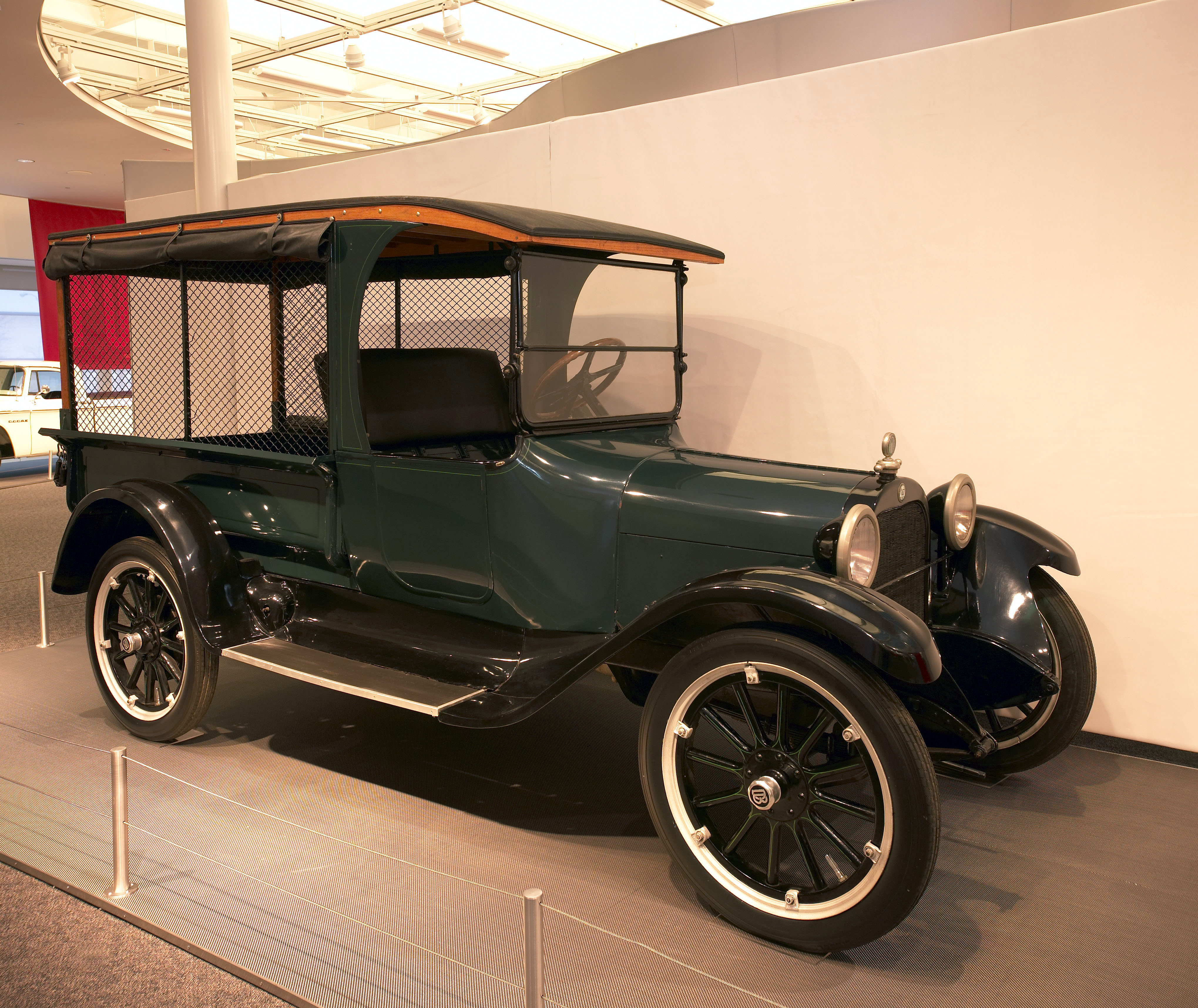

One of these companies was Graham Brothers, and the two firms arranged for Graham trucks to be sold through Dodge dealers. When Graham decided to focus on cars, Dodge bought its truck division. When Chrysler bought Dodge in 1928, Graham trucks became Dodge trucks.
Dodge’s trucks and cars got a much-needed styling update in 1933, but the real lookers were released for 1936, with cascading grilles and new headlights.
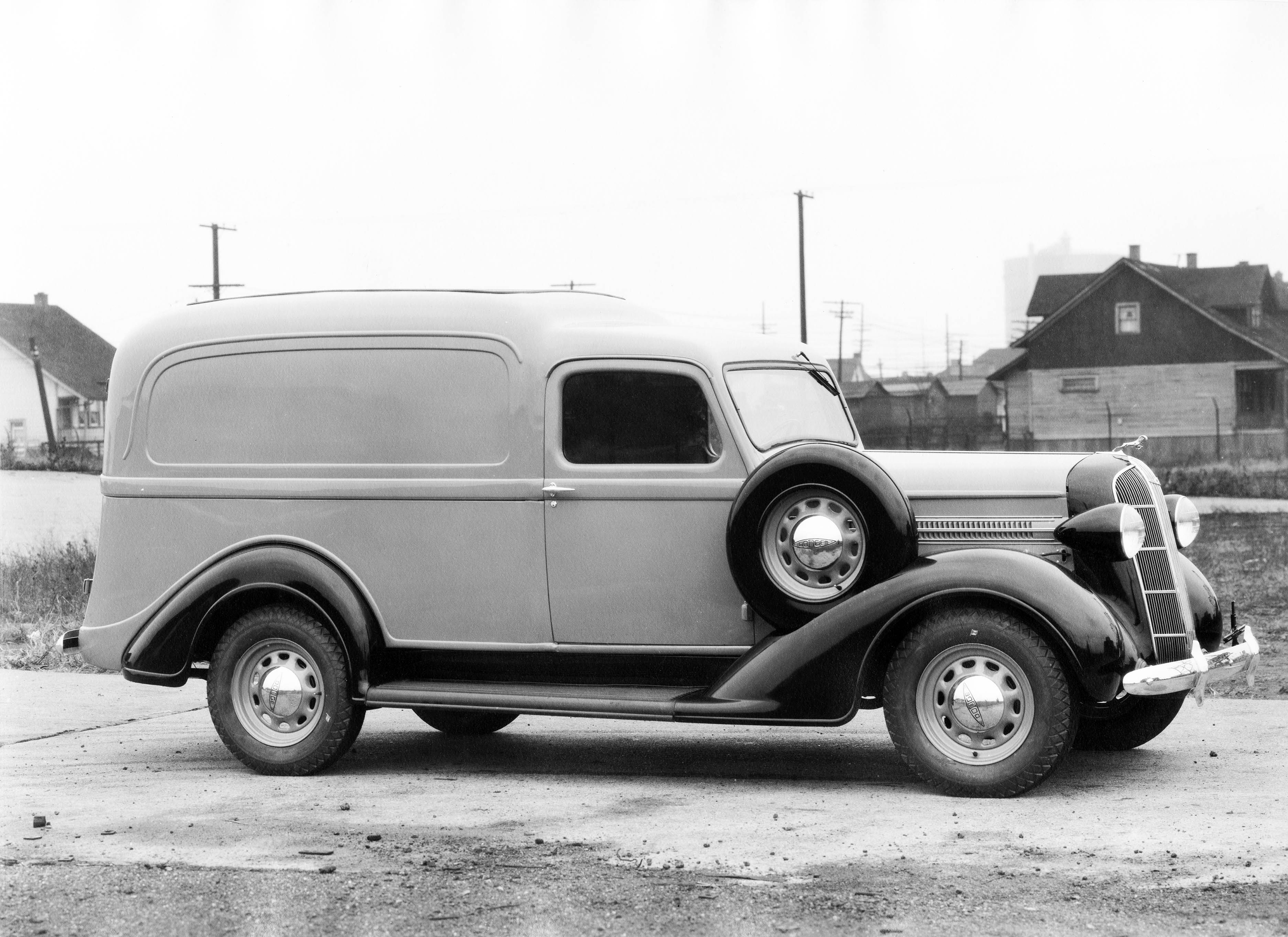
All automakers switched from civilian vehicles to military supplies during the Second World War. Dodge made numerous items such as air raid sirens and marine engines, but its major contribution was more than half a million trucks, including the heavy-duty, four-wheel-drive Power Wagon. After the war, Dodge adapted it for public sale, starting in 1946.
All-new trucks were released for 1948, featuring a more modern front end with a wider horizontal grille. There was also a new “Route Van” delivery step van with some unusual features. It used Chrysler’s Fluid Drive semi-automatic transmission, had an electro-hydraulic brake that let the driver leave it in gear during deliveries, and it had two rear axles – one to drive the wheels, and the other to support the load. In 1950, Dodge offered Fluid Drive on all trucks up to one ton.
In January 1951, Dodge was once again contracted for military production, this time for the Korean War, although civilian trucks rolled off the lines as well.

An all-new pickup came for 1954, and for the first time, a V8 was available on medium- and heavy-duty trucks alongside the six-cylinder, for an extra $120. Halfway through the year, you could get eight cylinders on a light-duty truck too.
Dodge’s cars got new styling in 1957, dubbed the “Forward Look,” and trucks shared it too. The half-tons got hooded headlights and the bed sides grew fins, called Sweptside. A non-finned Sweptline half-ton arrived for 1959, but that basic 1957 design would finish out the decade, and stick around until the all-new trucks in 1961.
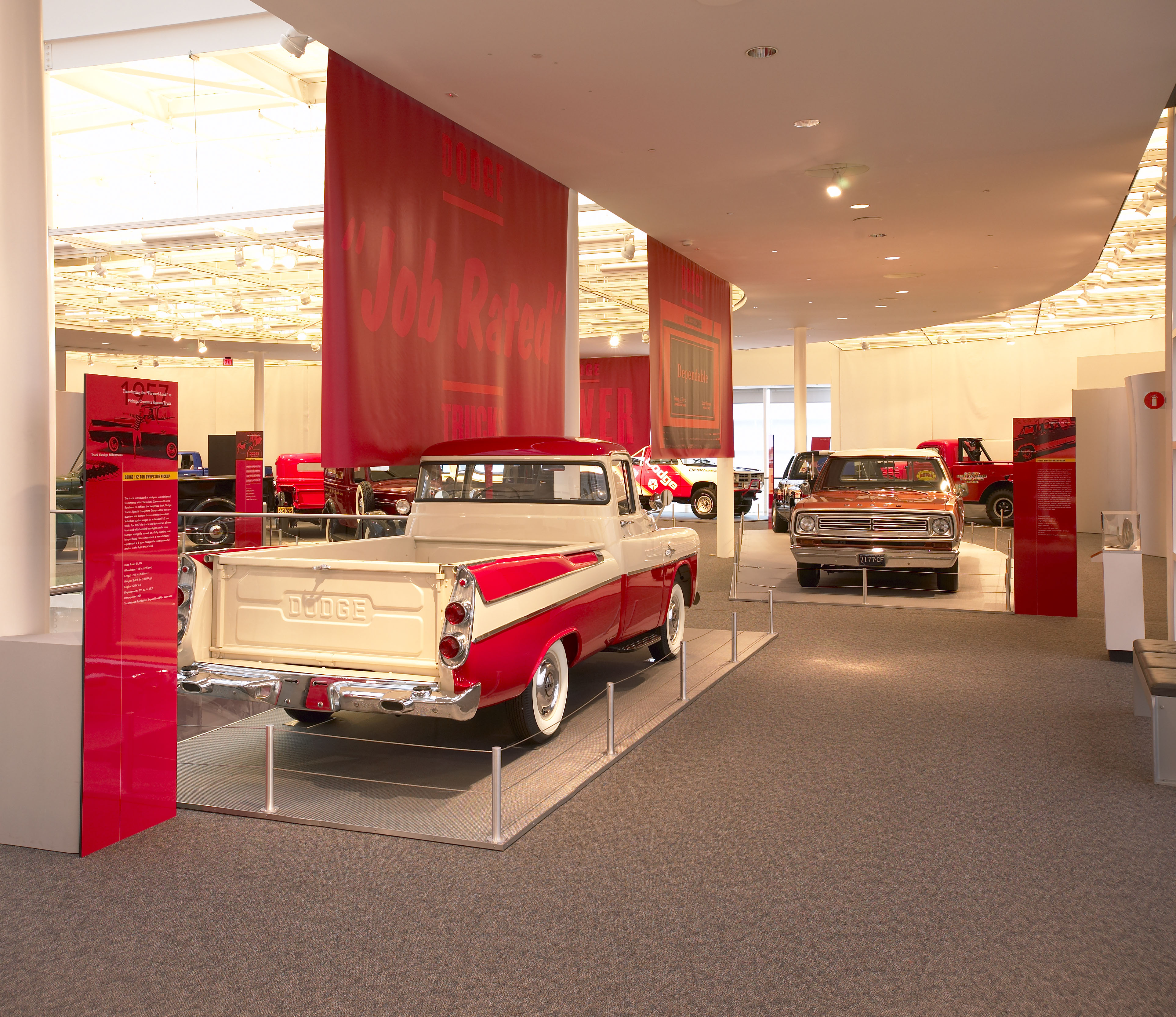
Here are some other interesting tidbits about Dodge’s trucks…
- The bighorn sheep mascot was introduced on Dodge cars in 1932 and migrated to the trucks, and would eventually give them the Ram name.
- Dodge trucks for the U.S. market were all made in Hamtramck, Michigan until 1934. In 1935, they were also built in Los Angeles. In 1938, production started up in Warren, Michigan, in a new factory dedicated solely to trucks, and which was the largest truck plant in the world when it opened. The 3.3-million-square-foot factory still builds Ram trucks today.
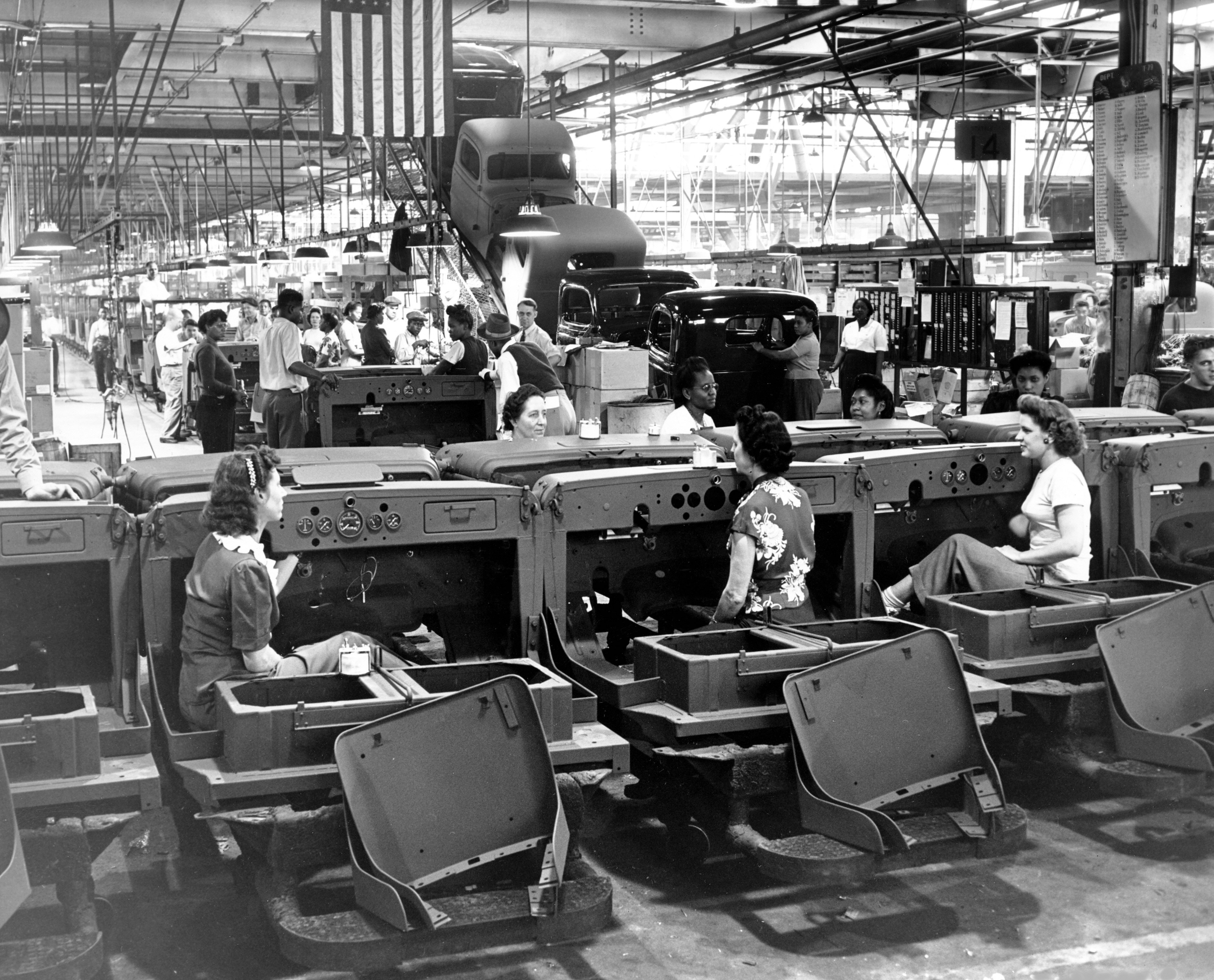
- In 1936, Chrysler introduced Fargo for the Canadian market, a retrimmed version of a Dodge truck. It was also sold in several global countries and lasted until 1972. Dodge’s American factories made some Fargo trucks for overseas export, but Canadian-market Fargo vehicles were all built north of the border.
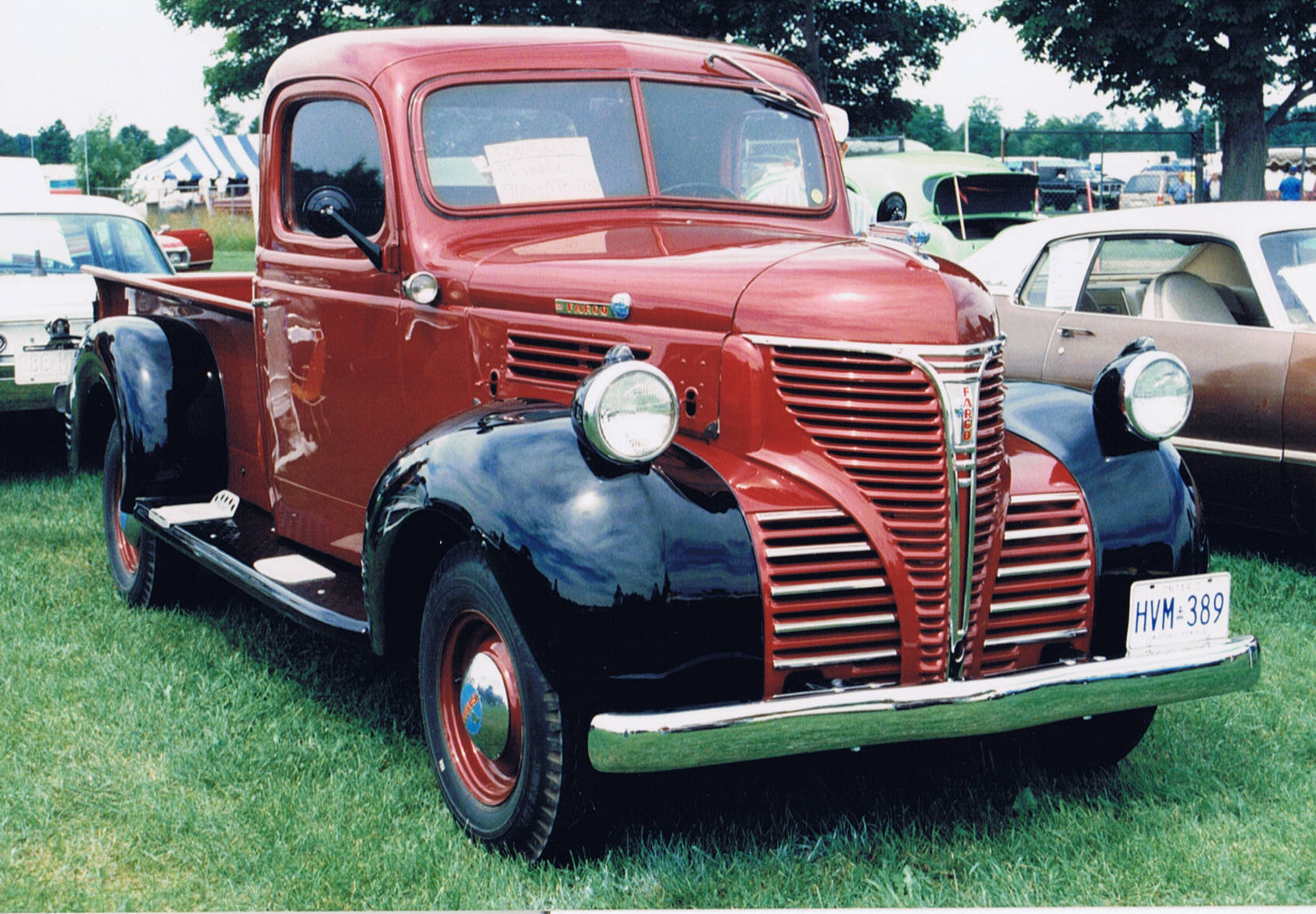
- John and Horace Dodge were born in Michigan, but they built their first bicycles and auto parts when they were temporarily living and working in Windsor, Ontario, across the border from Detroit. Walter Chrysler created his company when he took over Maxwell, an automaker based in Detroit. The deal included a Maxwell plant in Windsor, which began building Canadian-market Dodge trucks in 1931.
Collectors have a lot of love for the 1970s and 1980s Dodge trucks, but earlier trucks have their fair share of fans, especially 1936 and on with the new styling. Early Power Wagons can be a handful to drive, but they also have a devoted following. Of all the pre-1960s Dodge pickups, the finned Sweptside is the most coveted, and be prepared to spend accordingly for one. Fargo trucks are more popular in Canada, where they’re also easier to find, but many American collectors also like them because they’re “something different.” The best part is that, other than trim, virtually all classic dodge truck parts will fit on a Fargo.
